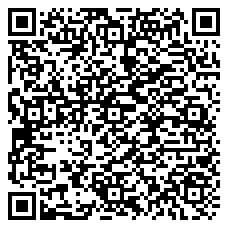Introduction
This course answers a simple yet critical question: "What is the best way to help organize and assist a group of professionals focus on achieving a collective objective?" The aim of this course is to enable participants to maximize the efficiency and effectiveness of their organizational structure in alignment with strategic objectives, environmental complexity, and workforce availability and readiness to perform.
Organizational design is perceived as a collective responsibility, where Human Resources (HR) professionals facilitate and guide the process. With this in mind, the course will provide a comprehensive toolkit to enable HR staff to facilitate and guide the organizational design process systematically. The toolkit includes resources such as brainstorming charts used during the analysis stage, design templates, and facilitation guides, including agendas for working sessions. In other words, this course addresses the functional needs of participants and ensures their capability to implement the concepts learned.
Course Objectives
By the end of this course, you will be able to:
- Differentiate between common organizational structure archetypes and understand their impact on individual and organizational performance.
- Analyze organizational design elements, including but not limited to strategic goals, scope of operation, governance, competence, and span of control.
- Co-design or redesign organizational structures using a comprehensive toolkit.
- Improve organizational readiness for change by identifying enablers such as incentive schemes or operating mechanisms.
- Apply workforce planning methods to define workforce gaps at both the departmental and organizational levels.
- Acquire the HR skills necessary for an organizational design professional, such as job evaluation and job description writing.
Course Outlines
Day 1: The Evolution of Organizational Design Models
- Definition and objectives of organizational design.
- The evolution of organizational design models and the characteristics of each.
- Leavitt Diamond Model (technology, task, people, and structure).
- Galbraith Star Model (strategy, structure, processes, rewards, and people).
- McKinsey 7S Model (strategy, structure, systems, staff, skills, styles, and shared values).
- Burke-Litwin Model (McKinsey 7S factors plus external environment, performance, and feedback).
Day 2: Organizational Archetypes
- Common types of organizational structures and their implications on organizational effectiveness:
- Functional.
- Geographical.
- Customer or Market.
- Product.
- Process.
- Matrix.
- Frameworks to help you position your organization and determine critical factors such as position overlap and span of control.
- Environmental complexity and stability framework.
- Work standardization framework: work variety vs internal ability.
- Classifying operating mechanisms.
Day 3: Functional Toolkit for Design and Redesign of Optimal Organizational Structures
- Who should be involved and the HR role and responsibilities.
- Elements to analyze and consider:
- Goals: Linking structure to strategy.
- Limits: Scoping and focusing organizational design work.
- Activities: Defining key activities to deliver strategy and decision-making requirements.
- Units: Separating functions into units to drive focus and specialization.
- Links: Coordinating and collaborating across units to avoid silos and foster cooperation.
- Shape: Defining spans and hierarchy layers.
- A comprehensive toolkit to plan and design your organizational structure.
- A radar chart to indicate change initiatives required for the success of the new design.
Day 4: Workforce Planning
- Defining workforce planning.
- Forecasting employee needs:
- Static approach.
- Dynamic approach.
- Keys to successful workforce planning.
- Strategic staffing processes.
- Demand analysis:
- Trend analysis.
- Ratio analysis.
- Zero manning methodology.
- Capturing and tabulating data.
Day 5: Essential Skills to Master as an Organizational Design and Workforce Planning Professional
- Job evaluation: Using the Meirc job evaluation system and its implications.
- Job description writing for new or amended roles in compliance with job evaluation system requirements.
- Salary structures and incentive schemes.
- Improving staff readiness through learning and development.
Why Attend This Course: Wins & Losses!
- Gain a deep understanding of organizational design types and how to apply them in real-world business environments.
- Learn how to strategically plan workforce needs through effective manpower planning and workforce planning methods.
- Acquire comprehensive tools and techniques to redesign or design an organizational structure that aligns with strategic goals.
- Master the essentials of workforce planning and manpower planning, ensuring your organization is well-positioned to tackle future challenges.
- Obtain an organizational design certification recognized by industry leaders, enhancing your professional credentials.
Conclusion
This course equips you with the essential knowledge and skills to improve the design of your organization and ensure it aligns with strategic goals. By mastering manpower planning, workforce planning, and various organizational design types, you will be prepared to face modern organizational challenges.
Register today and gain the organizational design certification that will advance your career and enhance your professional development in organizational design and workforce planning.


